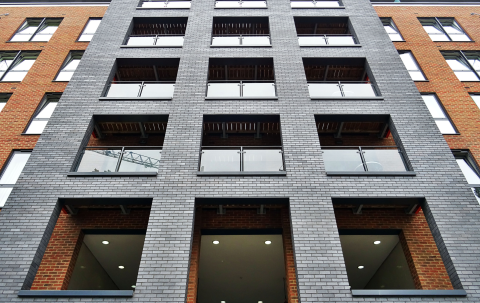This article was written by VHFA Spring Housing Fellow Christina Cramer

The Joint Center for Housing Studies of Harvard University recently published its annual report, America’s Rental Housing 2022, which thoroughly examines all aspects of the rental housing market. The study detailed the demographics of rental housing, rental housing stock, the rental markets, rental affordability, and the challenges associated with rental housing. The study suggests that federal support associated with the pandemic relief was beneficial to helping families remain in their homes, but finds that renters continue to face significant affordability challenges.
During the second year of the pandemic, rental housing demand rose substantially. A lack of available homes and increased prices kept those of higher income from buying while lower-income houses tended to face job losses which had a substantial impact on their ability to pay rent. In the third quarter of 2021, 23 percent of all households with incomes below $25,000, as well as 15 percent of those with incomes between $25,000 and $50,000, were behind on their home payments.
While households of all socioeconomic statuses can rent, people with low incomes and households of color are far more likely to be renters.
Households further cost burdened by the pandemic had to make basic tradeoffs which jeopardized basic health needs and well-being. Construction and use restrictions have left certain properties not available to rent, in addition to the already available and aging rental places that need significant investment to ensure they are safe for occupancy.
The report found that historic investments in emergency assistance and eviction prevention programs were broadly effective in keeping renters housed. Evictions remained 40 percent below historical averages as of November 2021, after most eviction moratoriums ended, which suggests that emergency rental assistance and income support had a significant impact. The report states, “The COVID-19 pandemic demonstrated the urgent need for a permanent funded housing safety net.”
Vermont was able to assist families in existing rentals to remain in their homes through financial assistance. The Vermont Emergency Rental Assistance Program (VERAP) was created to help renters who were dealing with financial challenges during the pandemic. VERAP assists with rental and utility assistance in addition to helping pay rent and past due balances. As of March 16, VERAP has provided approximately $68 million to tenants in Vermont. The highest dollar amount given has been to Chittenden County at approximately $24 million, followed by Rutland, Franklin and Windsor counties respectively.
The report notes, “Longer term, however, building more affordable rental housing is crucial—not only to alleviate some of the pressures on lower-income households but also to ensure equal opportunity to those long underserved by and discriminated against in the housing market. Significant spending is also needed to improve the resiliency, sustainability, and accessibility of the existing stock. While the private sector has an important role to play in all these efforts, it is up to the public sector to craft well-designed regulatory and fiscal incentives that will spur substantial investment in affordable housing.”
In order to increase the availability of rental housing and improve affordability in Vermont, new housing needs to be built. Vermont has a low rental vacancy rate, being approximately 2-3% behind the national average. In some places like Chittenden County, the currently rate hovers around 1%, which makes it difficult for renters of all income levels to find an apartment, and makes it increasingly near-impossible for low-income households. Creating additional rental housing takes planning, construction time, and labor availability. Starter homes that cost less than $250,000 also need to be available so that more renters have a home purchase option, freeing up more rental units.
Unfortunately, permitting process delays, material shortages, and lack of skilled trades professionals have made the building and renovation experience costly and protracted. Some initiatives to address affordable housing are in progress. Legislature is currently considering an omnibus housing bill (S. 226), which includes funds to build more affordable housing, repair rental units and loosen zoning restrictions.

